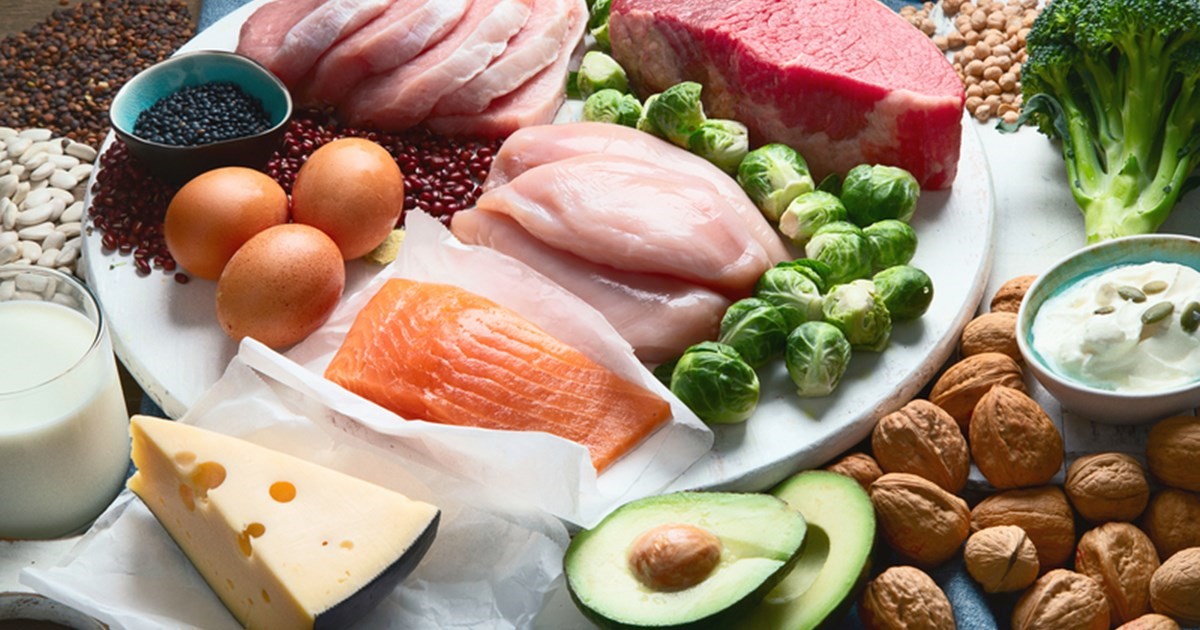Dear Protein,
What are you? How do I consume you? Are you really that important?
Protein is a hot topic, but it’s actually a lot simpler than it seems. It’s an essential nutrient made up of the amino acids the body needs to build tissue, provide us with energy and regulate organ functions. You can eat foods from numerous protein-filled food groups to reach your desired daily intake, and the body has a great filtration system to remove excess intake that you don’t need. But be aware that too much protein can increase health risks.
This necessary nutrient is often portrayed as the most important nutrient to track; you may believe the more protein you consume, the healthier you’ll be. Many food companies use this stigma to their advantage by advertising how much protein their products contain. However, filling your body with massive amounts of protein is not the answer to healthy eating.
Your body can only take in and process the amount of protein it needs, which is less than you’d think, as the body is very efficient with this process. If too much is consumed, the excess protein is processed by the kidneys and eliminated by the body as waste. This is a good thing, but overconsuming protein for an extended period of time can put your kidneys on overdrive and lead to adverse effects.
Luckily, there is a simple way to figure out an appropriate amount of protein to consume on a regular basis. Generally, you want to consume .5–1 grams of protein per pound of bodyweight. The majority of individuals should be eating around .5 grams. Those who need closer to 1 gram are high-level athletes and highly active individuals who do a lot of weight lifting and physically demanding activities.
Staying in the .5 gram per pound range is plenty. However, if you work out regularly, it’s ok if you get closer to the .65 grams per pound range. Here’s an example:
Joe weighs 160 pounds, works out regularly and lifts three times per week. He could consume 80-120 grams of protein per day [160 x (.5 and .65) = 80-104].
Once you figure out the amount of protein you should consume, all you have left to do is keep track of your intake by checking nutrition labels and adding your totals. If you’re struggling to find healthy protein sources, check out the chart below.
| Animal-based Protein Sources | Serving Size and Grams (g) of Protein | Vegan-based Protein Sources | Serving Size and Grams (g) of Protein |
| Beef sirloin (lean cuts) | 3 ounces steak = 25 g | Nuts (peanuts, almonds, walnuts) | 2 tablespoons peanut butter = 7 g |
| Chicken (breast or thighs) | 3 ounces breast = 26 g | Seitan (made from gluten) | 1 cup seitan = 7 g |
| Pork (lean pork loin) | 3 ounces = 23 g | Seeds (sunflower, chia) | 1 ounce chia seeds = 4.7 g |
| Seafood (salmon, cod, shrimp, tuna) | 4 ounces salmon = 27 g | Grains (oats, whole wheat, quinoa, couscous) | ½ cup quinoa = 4 g |
| Dairy products (milk, yogurt, cheese) | 1 cup yogurt = 12 g | Legumes (beans, lentils, chickpeas, peas) | ½ cup black beans = 8 g |
| Eggs | 1 large egg = 6.5 g | Soy (tofu, tempeh, edamame) | ½ cup tofu = 11 g |

